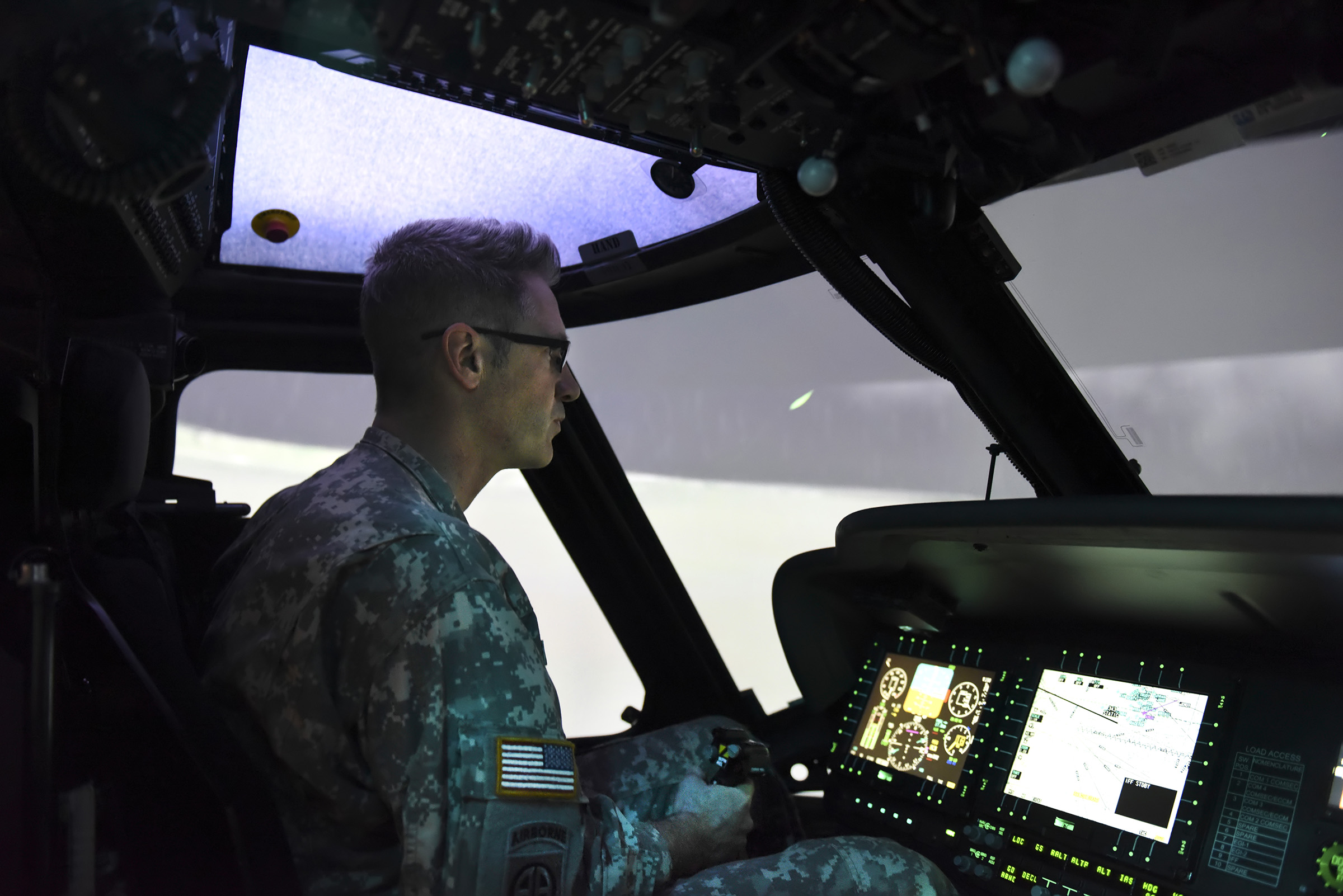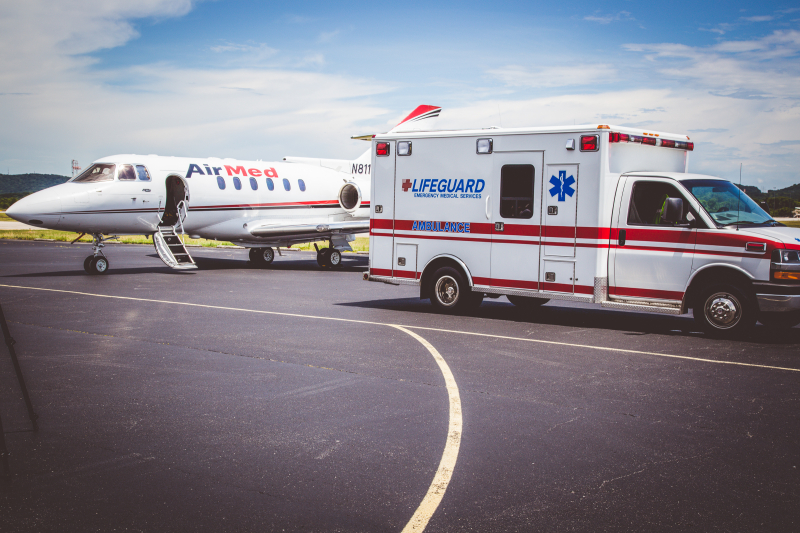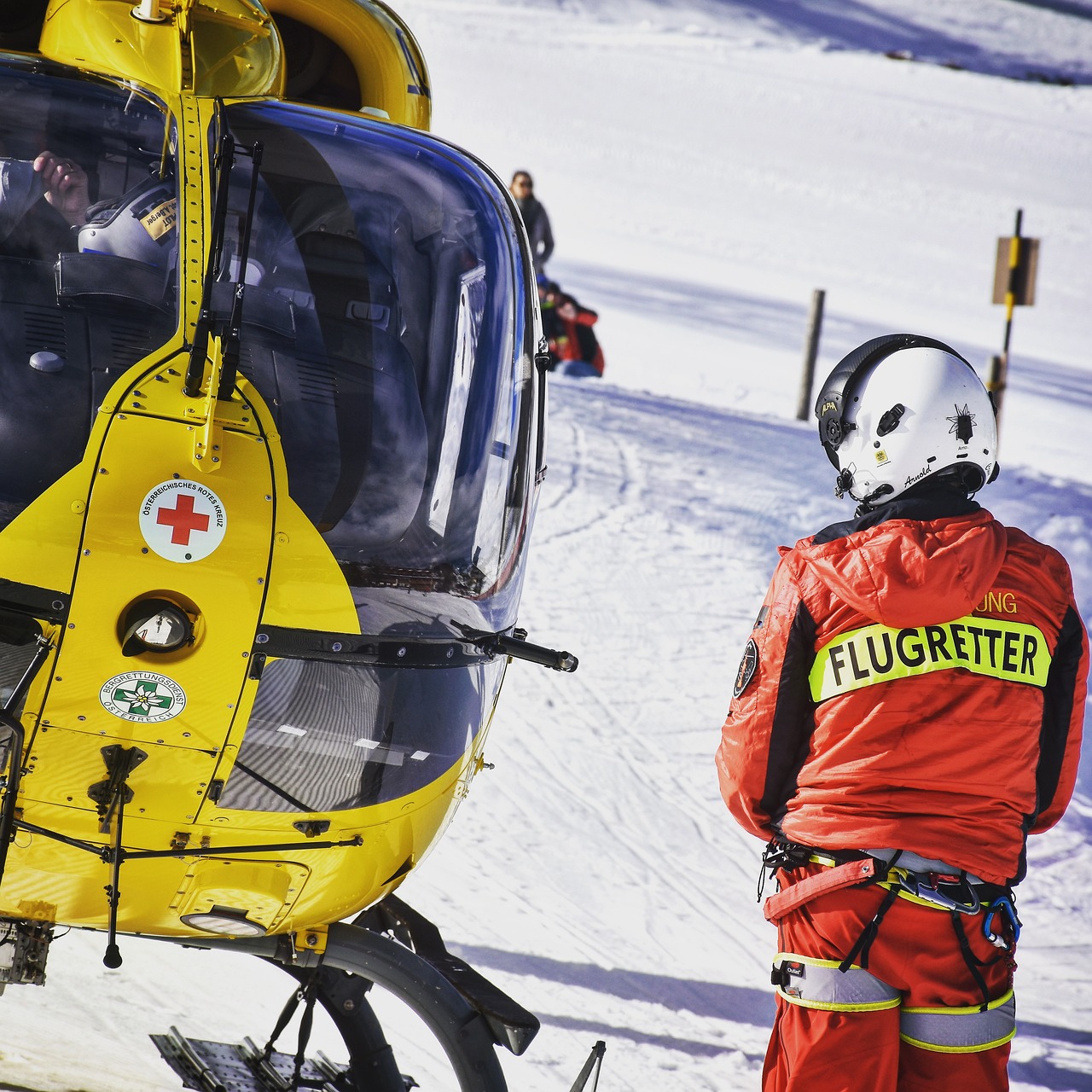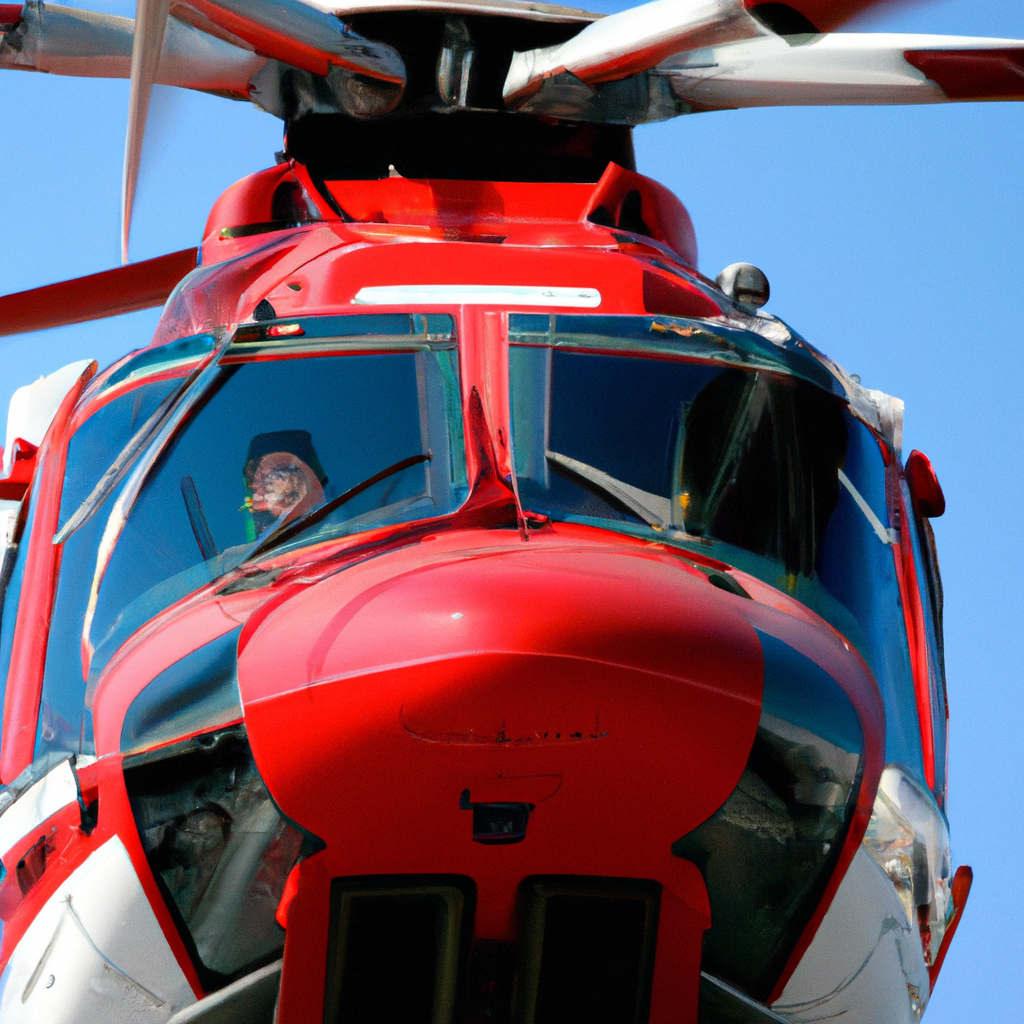So, picture this: you’re thousands of feet up in the air, on a mission to save someone’s life. It’s high-pressure, it’s intense, and it’s crucial to be prepared for any situation that may arise. That’s where simulation training comes in. In the world of air ambulances, simulation training plays a vital role in ensuring that the crew is ready to handle whatever comes their way. From practicing emergency procedures to fine-tuning communication skills, this type of training is like a virtual dress rehearsal for real-life scenarios. In this blog post, we’re going to delve into the importance of simulation training in air ambulance crew preparedness. Trust me, you don’t want to miss this!
The Importance of Simulation Training in Air Ambulance Crew Preparedness
When it comes to emergency medical services, time is of the essence. In situations where every second counts, it is crucial that air ambulance crews are prepared to handle any emergency scenario with precision and efficiency. This is where simulation training plays a vital role in ensuring the readiness of air ambulance crews. By providing a realistic and controlled environment to practice and fine-tune their skills, simulation training significantly enhances the preparedness of these lifesaving teams.
The Role of Simulation Training in Preparing Air Ambulance Crews for Emergency Situations
Simulation training allows air ambulance crews to experience high-stress and challenging scenarios in a safe and controlled environment. Through the use of advanced medical simulators, realistic patient mannequins, and cutting-edge equipment, crews can immerse themselves in lifelike situations that closely resemble real emergencies. This immersive training enables them to develop critical decision-making skills, enhance communication and teamwork, and improve their ability to adapt to rapidly changing situations.
Benefits of Simulation Training in Improving Crew Skills and Readiness
The benefits of simulation training for air ambulance crews are multifaceted. Firstly, it allows them to practice rare and complex procedures that they may encounter in real-life emergencies, thereby increasing their confidence and competence. Furthermore, simulation training provides crews with the opportunity to learn from their mistakes in a controlled environment, ensuring that they are better prepared to handle similar situations in the future. Additionally, simulation training promotes collaboration and effective communication among team members, which are essential elements for successful patient outcomes.
The Impact of Simulation Training on Patient Outcomes
Ultimately, the primary goal of air ambulance crews is to provide the highest level of care to their patients. Simulation training directly contributes to improved patient outcomes by enhancing the skill set and preparedness of these medical professionals. By honing their technical skills, developing critical thinking abilities, and fostering effective teamwork, crews can optimize patient care and increase the chances of successful interventions. Simulation training acts as a bridge between theory and practice, ensuring that crews can seamlessly apply their knowledge and expertise in real-world situations, leading to better outcomes for patients.
Regulatory Requirements for Simulation Training in Air Ambulance Services
Recognizing the immense value of simulation training, regulatory bodies have established specific requirements for its implementation in air ambulance services. These regulations aim to standardize and ensure the quality of training programs, ultimately enhancing patient safety. Air ambulance services must adhere to these guidelines, which often include minimum hours of simulation training, specific training scenarios, and documentation of crew competency. Regulatory oversight serves as an additional layer of assurance that air ambulance crews are adequately prepared to provide high-quality care in emergency situations.
Types of Simulation Training Used in Air Ambulance Crew Preparedness
Simulation training encompasses a wide range of methodologies that cater to the diverse needs of air ambulance crews. One commonly utilized method is high-fidelity simulation, which incorporates advanced patient mannequins that can mimic physiological functions and respond to interventions, providing crews with a lifelike experience. Another form of simulation training is virtual reality, which immerses crews in a computer-generated environment, allowing them to practice skills in a highly realistic and interactive manner. Augmented reality is another emerging technology that overlays virtual elements onto the real-world environment, providing crews with valuable training experiences. These various types of simulation training ensure that air ambulance crews receive comprehensive and diverse training to enhance their preparedness.

Designing Effective Simulation Training Programs
To maximize the benefits of simulation training in air ambulance crew preparedness, it is crucial to design effective training programs that address the specific needs and challenges faced by these dedicated professionals.
Identifying Essential Training Scenarios for Air Ambulance Crews
When designing simulation training programs, it is essential to identify and prioritize the most critical scenarios that air ambulance crews may encounter in their line of work. These scenarios may include trauma incidents, medical emergencies, and specialized procedures. By focusing on these key areas, simulation training can efficiently allocate time and resources to ensure that crews are well-prepared for the most likely and high-impact situations they may face.
Utilizing Realistic Patient Simulators and Equipment
The realism and fidelity of simulation training heavily rely on the quality of patient simulators and equipment used. Investing in state-of-the-art simulators that accurately replicate human physiology and behavior is crucial to providing crews with an authentic training experience. Additionally, ensuring that the equipment used during simulation exercises mirrors that found in real air ambulance settings enhances crew familiarity and confidence when using these life-saving tools.
Incorporating Interprofessional Team Training in Simulation Exercises
Successful air ambulance operations rely on effective communication and collaboration among team members from various disciplines, including pilots, physicians, nurses, and paramedics. Incorporating interprofessional team training in simulation exercises allows different members of the air ambulance crew to practice working together cohesively, ensuring seamless coordination during real emergencies. This interdisciplinary approach fosters mutual understanding, enhances communication, and promotes a patient-centric mindset within the crew.
Maintaining a Safe and Controlled Training Environment
Safety is paramount during simulation training. While the purpose of these exercises is to replicate real emergencies, precautions must be taken to minimize the risk of harm to participants and patients. Establishing clear safety protocols, including proper supervision, guidelines for the use of equipment, and communication strategies, ensures that simulation training remains a valuable learning experience while minimizing unnecessary risk.
Evaluating and Assessing the Effectiveness of Simulation Training
Continuous evaluation and assessment of simulation training programs are essential for identifying areas of improvement and ensuring ongoing effectiveness. Regular debriefings, feedback sessions, and performance evaluations enable air ambulance crews to reflect on their performance, learn from their experiences, and implement necessary changes for future training sessions. By actively seeking input from participants and collecting data on performance metrics, simulation training programs can evolve and adapt to meet the evolving needs of air ambulance crews.
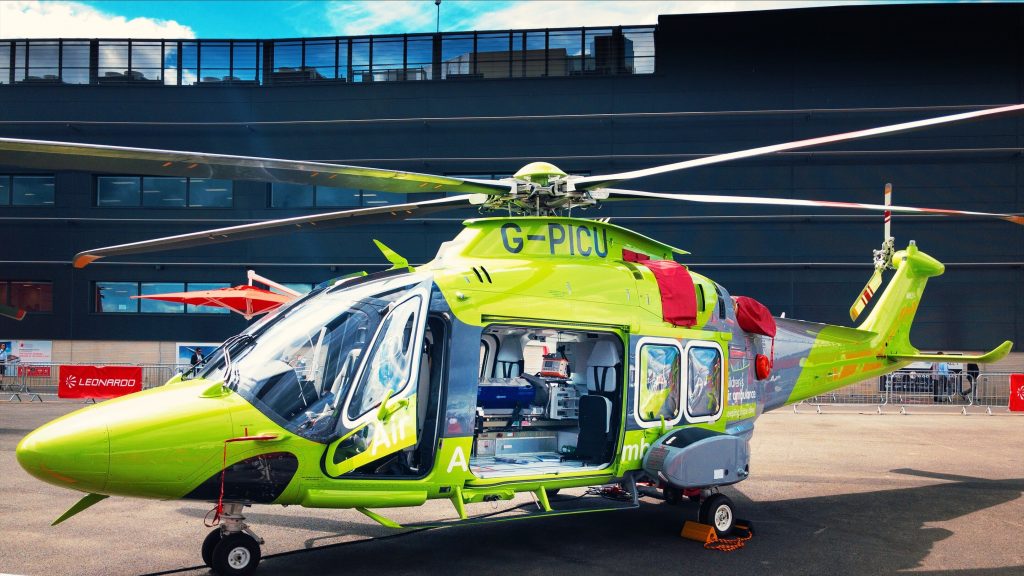
Integration of Simulation Training into Air Ambulance Crew Training
To fully leverage the benefits of simulation training, it should be integrated into both initial air ambulance crew training and ongoing skill maintenance and enhancement.
Incorporating Simulation Training into Initial Air Ambulance Crew Training
Simulation training should be an integral part of the initial training process for air ambulance crews. By offering immersive experiences early on, new crew members can develop foundational skills, gain exposure to different scenarios, and become familiar with the unique challenges of air ambulance operations. The integration of simulation training from the outset ensures that crews are well-prepared and confident in their abilities as they embark on their careers in air ambulance services.
Ongoing Simulation Training for Skill Maintenance and Enhancement
Proficiency in emergency medical procedures and teamwork is not a one-time achievement, but a continuous effort that requires regular practice and reinforcement. Ongoing simulation training programs should be implemented to allow air ambulance crews to maintain and enhance their skills throughout their careers. By incorporating recurrent training sessions, crews can remain up-to-date with the latest best practices, refine their techniques, and effectively address any areas that may need improvement.
Collaboration with Medical Institutions and Educational Programs for Simulation Training
Collaboration between air ambulance services and medical institutions or educational programs can enrich simulation training opportunities. Partnering with academic institutions and medical schools allows air ambulance crews to benefit from their expertise and resources in simulation training. This collaboration creates a mutually beneficial relationship, with air ambulance services gaining access to cutting-edge simulation technology and knowledge, while educational institutions benefit from real-world insights and feedback from experienced air ambulance crews.
Utilizing Virtual Reality and Augmented Reality Technology in Simulation Training
Advancements in technology have opened up new possibilities for simulation training in air ambulance crew preparedness. Virtual reality (VR) and augmented reality (AR) offer unique immersive experiences that can enhance learning and skill development. VR can replicate the inside of an aircraft or a hospital, allowing crews to practice their skills in a highly realistic virtual environment. AR overlays virtual elements onto the real-world setting, enabling crews to simulate emergency scenarios in their actual working environment. The integration of VR and AR into simulation training programs provides air ambulance crews with innovative and engaging training experiences, further enhancing their preparedness.
Updating and Adapting Simulation Training Programs to Reflect Evolving Industry Standards
The field of air ambulance services is continually evolving, with new techniques, technologies, and best practices emerging. Simulation training programs must remain flexible and adapt to these changes to ensure relevancy and effectiveness. Regular updates and revisions to training scenarios, equipment, and protocols allow air ambulance crews to stay at the forefront of their profession and provide the best possible care to their patients. Close collaboration between simulation training providers, industry experts, and regulatory bodies is essential for identifying emerging trends and incorporating them into training programs.
Challenges and Limitations of Simulation Training in Air Ambulance Crew Preparedness
While simulation training presents numerous benefits, there are several challenges and limitations that must be acknowledged and addressed.
Cost and Resource Limitations in Implementing Simulation Training Programs
Implementing comprehensive simulation training programs requires significant investments in terms of equipment, facilities, and personnel. The cost of high-fidelity patient simulators, technological infrastructure, and dedicated simulation centers can pose financial challenges for air ambulance services, particularly smaller organizations with limited resources. However, the long-term benefits and improvements in patient care justify these initial investments, making simulation training a valuable endeavor for air ambulance services.
Addressing the Potential for Anxiety and Stress During Simulation Exercises
Simulation exercises can induce anxiety and stress in participants, as they closely resemble real emergency situations. To address this, it is important to create a supportive and non-threatening learning environment. Adequate debriefing sessions, emotional support, and open communication channels with instructors and peers can help alleviate anxiety and ensure that crews can fully engage in the training experience. By acknowledging and addressing the potential emotional impact of simulation exercises, air ambulance crews can better manage stress and develop strategies to cope with high-pressure situations in real emergencies.
Ensuring Adherence to Safety Protocols and Preventing Errors in Simulation Training
While simulation training strives to replicate real-world emergencies, certain safety protocols and limitations must be established to prevent potential harm to participants. It is crucial to clearly communicate these protocols, ensure adherence to them, and provide proper oversight during simulation exercises. Additionally, errors or mistakes made during training should be addressed constructively, serving as valuable learning opportunities without compromising patient safety. A strong emphasis on safety and error prevention ultimately contributes to the overall effectiveness and success of simulation training programs.
The Need for Continuous Evaluation and Improvement of Simulation Training Programs
Simulation training programs should undergo regular evaluation and assessment to identify areas of improvement and ensure their ongoing relevance and effectiveness. Gathering feedback from participants, instructors, and supervisors and implementing changes based on this feedback enables the refinement and enhancement of training programs. Conducting performance evaluations, analyzing data, and benchmarking against industry standards are vital components of the evaluation process. The commitment to continuous improvement ensures that simulation training programs remain dynamic and aligned with the evolving needs of air ambulance crews.
Overcoming Resistance and Skepticism Towards Simulation Training in the Air Ambulance Industry
Despite the overwhelming evidence supporting the benefits of simulation training, skepticism and resistance may still exist among some individuals or organizations within the air ambulance industry. Addressing misconceptions and providing clear evidence of the positive impact of simulation training can help overcome these barriers. Sharing success stories, testimonials from crew members, and research studies demonstrating improved patient outcomes due to simulation training can build confidence and foster a culture of continuous learning and improvement within the air ambulance industry.
Case Studies and Success Stories: Simulation Training in Action
To further illustrate the real-world impact and effectiveness of simulation training in air ambulance crew preparedness, several case studies and success stories stand as testament to its value.
Real-Life Examples of Simulation Training Leading to Successful Outcomes
Numerous cases highlight the lifesaving impact of simulation training on air ambulance crew performance. For example, a simulation training program in one air ambulance service focused on preparing crews for neonatal emergencies. When confronted with a real-life neonatal emergency, the crew was able to apply their simulation training effectively, leading to a successful resuscitation and a positive outcome for the newborn. These real-life success stories demonstrate how simulation training directly translates into improved patient care and enhanced outcomes.
Testimonials from Air Ambulance Crew Members on the Impact of Simulation Training
Air ambulance crew members who have undergone simulation training often attest to its significance. Testimonials from these individuals shed light on the transformative impact simulation training has had on their skills, confidence, and ability to handle high-stress situations. These first-hand accounts serve as powerful voices advocating for the incorporation of simulation training into air ambulance crew preparedness. The experiences and perspectives shared by these crew members underscore the value of simulation training in their professional development and the critical role it plays in saving lives.
Collaborative Efforts Between Air Ambulance Services and Simulation Training Providers
Collaboration between air ambulance services and simulation training providers has proven to be essential in developing effective training programs. By partnering with experienced simulation training providers, air ambulance services gain access to the expertise, resources, and technology required for successful simulation training. This collaborative approach ensures that simulation exercises are tailored to the unique needs of air ambulance crews, with a focus on relevant scenarios and the development of specific skills. The synergy generated through these collaborations facilitates the delivery of high-quality simulation training programs in air ambulance services.
Innovative Approaches to Simulation Training in Air Ambulance Crew Preparedness
As simulation training continues to evolve, innovative approaches are emerging to enhance the effectiveness of training programs. For instance, some air ambulance services have begun utilizing virtual reality to simulate complex and high-stress scenarios, allowing crews to practice their skills in a realistic virtual environment. This technology offers unprecedented opportunities for immersion, engagement, and skill development. Additionally, the integration of augmented reality in simulation training provides crews with enhanced situational awareness and decision-making capabilities. These innovative approaches push the boundaries of simulation training and contribute to the ongoing improvement of air ambulance crew preparedness.
The Role of Simulation Training in Challenging and High-Stress Scenarios
Simulation training is particularly valuable when it comes to preparing air ambulance crews for challenging and high-stress scenarios. The ability to accurately replicate these situations and expose crews to the associated stressors and complexities prepares them to perform at their best when faced with real emergencies. Simulation training hones their critical thinking skills, decision-making abilities, and teamwork dynamics in a controlled environment, ensuring that they are well-equipped to handle the most demanding situations they may encounter in the field.
In conclusion, the role of simulation training in air ambulance crew preparedness cannot be overstated. By providing a realistic and controlled environment, simulation training significantly enhances crew skills and readiness, leading to improved patient outcomes. The effectiveness of simulation training programs is further amplified by identifying essential training scenarios, utilizing realistic patient simulators and equipment, incorporating interprofessional team training, maintaining a safe training environment, and continually evaluating program effectiveness. Integrating simulation training into initial and ongoing crew training, collaborating with medical institutions, and leveraging technology advancements further maximize the benefits of simulation training. While challenges and limitations exist, case studies and success stories attest to the tangible impact of simulation training in the air ambulance industry. Through continuous innovation, evaluation, and adoption, simulation training is poised to remain a cornerstone in air ambulance crew preparedness, ensuring that these lifesaving professionals are equipped with the skills and confidence to provide the highest level of care in emergency situations.
